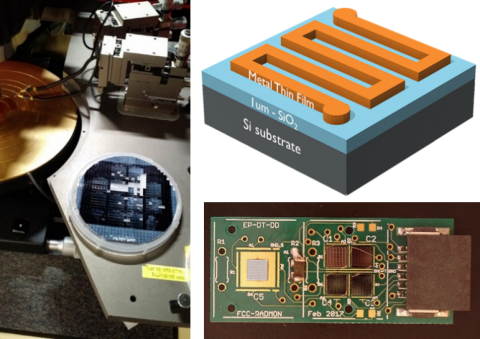
New dosimeter design for FCC
Federico Ravotti, 08/03/2019

New dosimeter design for FCC (Image: CERN)
Federico Ravotti on behalf of the Irradiation Facilities Team at CERN
The presence of radiation at the LHC and its experiments may cause damage to sensitive electronics equipment, particle detectors and magnets, compromising their operation and affecting their physics program. At CERN, silicon-based dosimeters (also called RADMON) have been used to monitor radiation levels within the volume of the LHC experiments, as well as in the in the tunnel areas.
However, future circular colliders such as the FCC, reaching collision energies of 100 TeV, are expected to generate unprecedented amounts of radiation, posing new challenges for radiation monitoring. Specifically, this calls for the development of new technologies and materials, as current silicon-based dosimetry systems are not capable to fulfil the requirements for ultra-high dose and particle fluence monitoring.
As a possible new technology for particle fluence monitoring, the irradiation facilities team in the Detector Development Section (Detector Technologies Group) has proposed – within Georgi Gorine’s PhD thesis at EPFL in Lausanne, funded by the FCC Special Technologies WP11 – the novel idea to use thin metal films. Since previous studies on radiation effects documented an increase of the metal resistivity due to high particle fluence, the team is developing a novel Radiation Dependent Resistor, where the sensitivity to particle fluence in terms of resistivity variation is selected by means of geometry and thickness of different metal layers. The first prototypes were manufactured at the Centre of Micronanotechnology (CMi) of EPFL.
Part of the irradiation campaigns performed for the development of this novel dosimeter design benefited from the AIDA-2020 Transnational Access at the JSI neutron facility in Ljubljana, Slovenia.
More details on the technology can be found in the EP newsletter article:
http://ep-news.web.cern.ch/content/new-dosimeter-design-fcc
(This article was first published in January 2018, by the Detector Technologies Group at CERN.)
